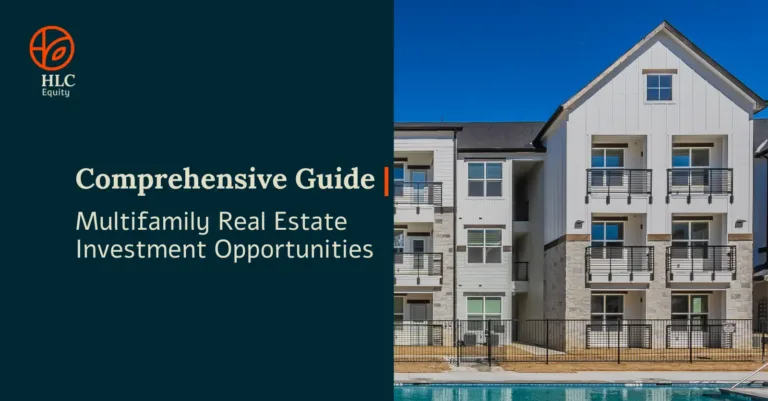Since at least the early 2000s, all eyes have been on Millennials. What do Millennials like? Where will they want to live? How can apartment owner attract them to their rentals?
Fast forward to today and there is an entirely new generation entering the rental market. Gen Z is knocking at the door. Literally and figuratively. In this article, we look at what motivates Gen Z and how apartment owners can prepare their properties in response.
Gen Z by the Numbers
Those who were born between 1997 and 2012 are generally considered to be part of “Gen Z”. That makes this cohort between 10 to 25 years old today. Those at the older end of the spectrum are moving away from home, graduating college, and beginning to rent their first apartments.
A study by the Brookings Institute finds that Gen Z is one of the most diverse generations, and likewise they value and seek out diversity in their purchase decisions. Unsurprisingly, Gen Z is the most likely group to identify as multiracial or to be born to immigrant parents.
Gen Z’s diversity will likely impact where and how they want to live. For instance, many will want to live in traditionally ethnic neighborhoods, especially if those neighborhoods are amenity-rich and more affordable than urban centers.
Getting to Know Gen Z
Some apartment owners will have children approaching Gen Z age. Others will have nothing in common with Gen Z and may struggle to relate. Those who are trying to plan for Gen Z renters should spend some time understanding what drives Gen Z in terms of lifestyle priorities. Here are some factors to consider:
- Gen Z values career mobility. Gen Z is entering the job market at an interesting time. There have been widespread labor shortages which has made it a job-seekers market. Many Gen Zers have graduated from college and quickly bounced from job to job in search of higher pay and upward mobility.
At the same time, they’re entering the labor force at a time when hybrid and even remote work is more widely acceptable. This has opened new job opportunities for them, often at high paying rates, and has increased the purchasing power for Gen Zers who can increasingly opt to live in more affordable areas since they are not faced with the same pressures to report to the office every day.
- Gen Zers are entrepreneurial. Gen Z is more likely to shun traditional work than the generations before them. Instead, Gen Zers are pursuing their passions and taking entrepreneurial risks. Technology has made it easier to start businesses. Startup costs are lower and therefore, the costs of failure are lower as well.
Along those same lines, many Gen Z renters are embracing freelance work. The proliferation of freelance work has created new avenues for people to create their own destinies. Some have pursued more standard freelance work (e.g., writing, editing, graphic design, and software engineering) whereas others are utilizing social media to become brand influencers.
- Gen Z is less tethered to geography.
The nation’s youngest adults appear more willing to relocate than any generation before them. Some are relocating to lower costs of living (easier than ever now that more companies are offering remote positions). Others are relocating for better career opportunities.To some extent, this is no surprise. People are marrying and having children later in life. Homeownership is becoming increasingly unaffordable. Those are the key factors that generally cause people to remain in one location. Gen Z has very little tying them down at this stage in life, which makes relocating significantly easier, and apartment living all the more attractive
- Gen Zers are trading big-city life for amenity-rich suburbs.
For many years, real estate developers focused their investments in dense urban areas. Class A apartment buildings sprung up to lure Millennials and the Gen Xers before them. Today, however, it seems as though Gen Z is more interested in living in amenity-rich suburbs.
As evidence, a recent study found that nearly two-thirds of Gen Z reports wanting to live in either traditional suburban locations or “urban light” locations (e.g., outer-ring urban areas) instead of “urban dense” locales.

- This generation is more financially conservative.
A substantial portion of this generation grew up during the 2008-2010 Great Recession—at a time when their parents lost jobs, took on massive credit card debt, and sometimes lost their homes to foreclosure. Early data suggests that Gen Z will be more financially conservative as a result. They are more hesitant to take on debt, are seriously considering the cost of college, and are opting for more affordable living situations to the extent possible.
What Multifamily Owners Can do to Lure Gen Z Renters
Based on what we know so far about Gen Z, multifamily owners can start to be proactive about preparing their properties to lure Gen Z renters both now and well into the future.
- Invest in technology.
Gen Z are digital natives. They have grown up with smartphones, iPad and other technology at their fingertips. They will expect to use software for a variety of purposes, ranging from virtual apartment tours to filling out rental applications. Multifamily owners should get comfortable using paid ads to target their ideal renter demographic, and then should invest in the mobile technology needed for online rent payments, R&M requests, text communications and more.
- Value high-quality shared spaces.
Given Gen Z’s financial constraints, many will look to rent smaller apartments (on a higher cost per SF basis) in buildings that have robust amenity spaces. Top priority should be on carving out thoughtfully designed co-work or meeting spaces that people can utilize while working from home. Investments in other shared spaces, like a common kitchen and outdoor terraces, will also be important as Gen Z will look at these as extensions of their home. It’s worth noting that Gen Z is especially comfortable sharing amenities as they have grown up during the proliferation of “shared” everything—from Uber/Toro to Airbnb—where personal ownership is less important.
- Smart home technology is a must.
Gen Z’s life has been made easier by smart home technology. They routinely use voice-enabled technology like Alexa to control their Nest thermostats, lights, and more. Integrating smart home technology is a rather low-cost investment that will pay dividends to multifamily owners looking to attract Gen Z renters to their apartments. Other investments may include smart plugs, charging stations, and integrated Bluetooth speakers.
- Value Sustainability.
Gen Z is perhaps the most environmentally conscious generation yet. Climate change is one of the leading issues among Gen Z, and in turn, they show their loyalty to brands that are responsive.
There are many ways multifamily owners can be proactive in this regard. For example, new multifamily developments (or heavy value-add investment) may consider pursuing LEED certification, or they may even seek the gold standard of environmentally sustainable apartment buildings – Passive House designation.
At a smaller scale, owners can utilize energy efficient appliances, HVAC systems and lighting. Some may consider adding solar panels, geothermal, and/or water reuse systems.
Multifamily owners should also have their eyes towards adding EV charging stations to their property. Electric vehicles are becoming more popular and it will be critical to have Level-2 chargers on-site to attract those who own them.
- Elevate your brand.
Gen Z’s obsession with social media makes branding more important than ever. Gen Z wants to lease apartments that have iconic features that they can show off online. HLC Equity’s Layers communities are being created for this new generation of renters seeking flexible living options with all the perks of modern apartment living and hospitality.

To the extent your property allows, consider what sort of “lifestyle” your property offers and then invest in amenities, artwork and other features that help it sell.
After attraction, focus on retention.
Although Gen Z is a highly mobile cohort, most will not want to move from one apartment to another every year. Owners who have lured Gen Z will need to simultaneously focus on keep them. The best way to do that is to engage with Gen Z. They want their voices to be heard. Ask them for their feedback about what improvements, amenities, events, etc. would be beneficial and then take their feedback seriously. Those who feel like they’ve been heard will be more likely to renew.  Current Gen Zers seem increasingly aware that homeownership may be out of their reach (at least, for some time). Nationally, the median home price is more than $440,000 and, in some markets, it’s more than double that. Interest rates continue to climb, making homeownership that much more unaffordable. This has effectively created a permanent renter class. Multifamily owners who want to capture this demographic can start taking proactive steps today to capture these renters well into the future.
Current Gen Zers seem increasingly aware that homeownership may be out of their reach (at least, for some time). Nationally, the median home price is more than $440,000 and, in some markets, it’s more than double that. Interest rates continue to climb, making homeownership that much more unaffordable. This has effectively created a permanent renter class. Multifamily owners who want to capture this demographic can start taking proactive steps today to capture these renters well into the future.
To learn more about HLC Equity’s LAYERS properties and offerings, visit layerslife.com
Interested in how HLC Equity and their investors are working to provide housing for Gen Z and others?
Visit HLCEquity.com/direct


